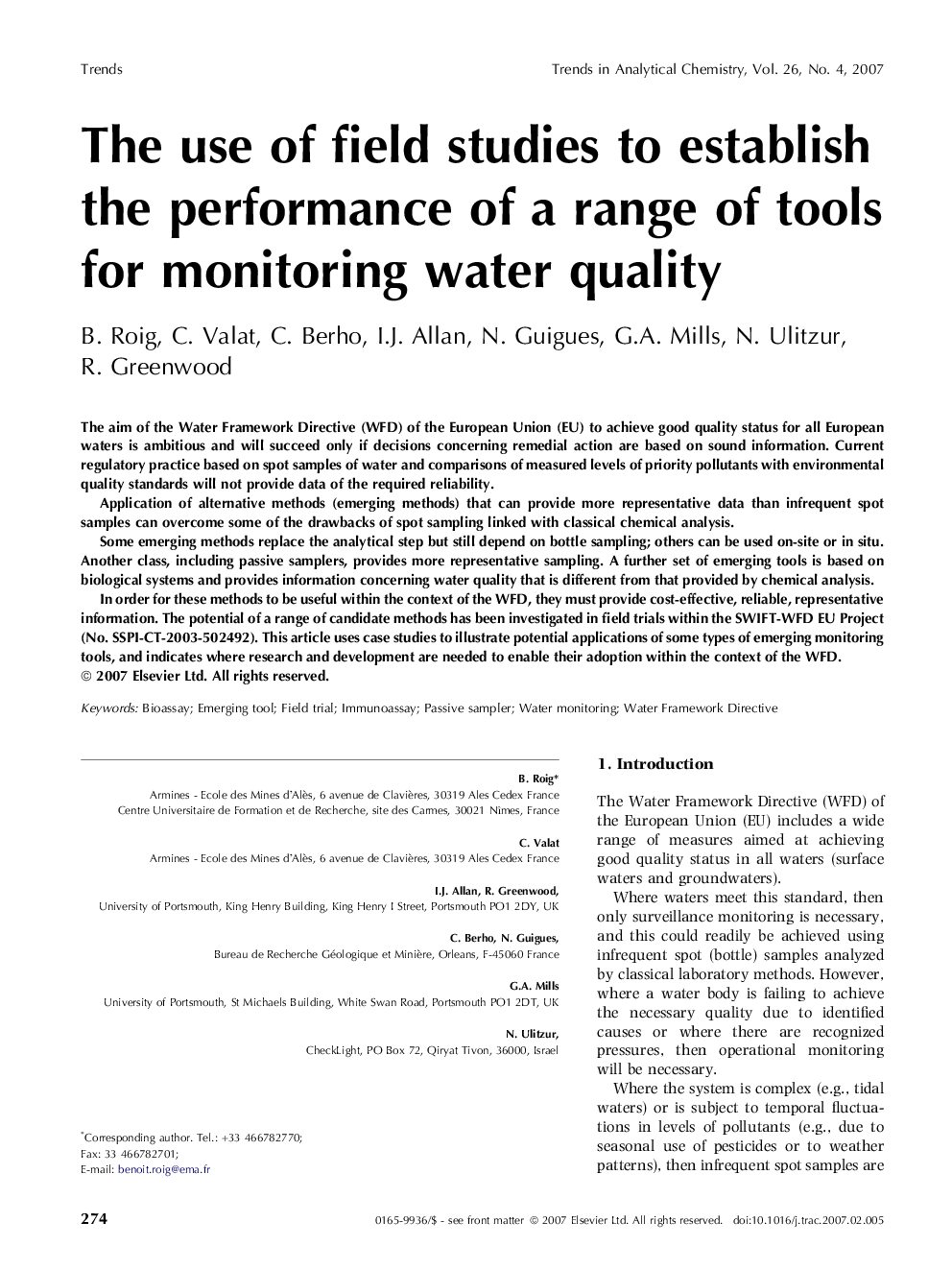| Article ID | Journal | Published Year | Pages | File Type |
|---|---|---|---|---|
| 1249475 | TrAC Trends in Analytical Chemistry | 2007 | 9 Pages |
The aim of the Water Framework Directive (WFD) of the European Union (EU) to achieve good quality status for all European waters is ambitious and will succeed only if decisions concerning remedial action are based on sound information. Current regulatory practice based on spot samples of water and comparisons of measured levels of priority pollutants with environmental quality standards will not provide data of the required reliability.Application of alternative methods (emerging methods) that can provide more representative data than infrequent spot samples can overcome some of the drawbacks of spot sampling linked with classical chemical analysis.Some emerging methods replace the analytical step but still depend on bottle sampling; others can be used on-site or in situ. Another class, including passive samplers, provides more representative sampling. A further set of emerging tools is based on biological systems and provides information concerning water quality that is different from that provided by chemical analysis.In order for these methods to be useful within the context of the WFD, they must provide cost-effective, reliable, representative information. The potential of a range of candidate methods has been investigated in field trials within the SWIFT-WFD EU Project (No. SSPI-CT-2003-502492). This article uses case studies to illustrate potential applications of some types of emerging monitoring tools, and indicates where research and development are needed to enable their adoption within the context of the WFD.
